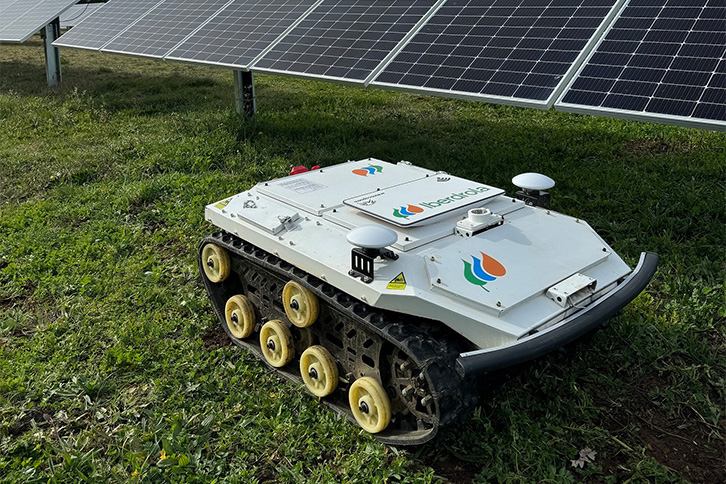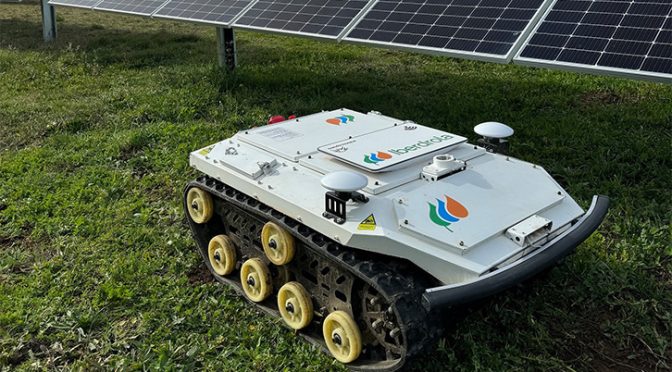Iberdrola and Arbórea Intellbird, the Spanish based technology company that created Arachnocopter and Antecursor I, are working at the Villarino solar plant (Salamanca), which is already operating at full capacity, with the robot Antecursor II*. It is capable of remotely and sustainably managing the photovoltaic plants.
This novel robot operates autonomously anywhere in the world thanks to the satellite coverage of the Starlink network and does so by running solely on renewable electrical energy.
Arbórea Intellbird, which provides services for the digital inspection of Iberdrola’s wind turbine blades, was promoted through Iberdrola’s start-up programme – PERSEO – for eight years with the aim of promoting its development and consolidating it in the sector. On this occasion, the company has gone a step further and has developed this new platform for autonomous inspection of solar plants.
This platform makes it possible to carry out an inspection process to detect thermal anomalies. It can be not only in the upper part of the panels, as drones do, but also, in the case of the Antecursor II, simultaneously in all their lower structures, such as clips, fuse holders, cable clamps or cabling, which escape aerial view.
The robot’s inspection autonomy far exceeds that of any other system, at over 30 hours. This allows inspections of the photovoltaic infrastructure to be carried out without requiring the intervention of any human operator. This is achieved thanks to a set of high-resolution thermographic sensors that continuously take thousands of measurements of the installation every second. This large mass of digital data is processed on board by an AI process, also patented by Arbórea, based on a combination of hardware and smart software developed by the company. The system detects anomalies, evaluates them according to plant conditions and reports an early identification of potential hot spots, all in real time. As a result, the technicians of the company that owns the installation receive an e-mail on their mobile phones with the alert, the position of the anomaly and a thermography with the reference values.
For this purpose, the robot continuously and regularly goes through the facility, monitoring the correct operation of the panels and the electrical circuit, processing the information on board, detecting anomalies and automatically reporting any value that could lead to the deterioration of the elements.

Continuous remote monitoring of the robot’s vital signs allows any irregularities to be detected early and all systems to be continuously updated, no matter how remote the location in which they operate.
Antecursor II has an integrated vegetation clearing system based on aeronautical materials to create a fine mulching of the vegetation and does so cleanly and very quietly. This 100% electric vegetation management avoids soil pollution by oils or fuels, greenhouse gas emissions, the risk of fire associated with hot engines or the breakage of panels due to the projection of stones from traditional disc or filament clearing systems. This continuous autonomous cutting encourages the growth of ground cover species, thus achieving greater control of dust, which is so harmful when deposited on the panels. Creating a layer of basal vegetation avoids desertification by runoff and favours the maintenance of living soils and therefore the maintenance of biodiversity in the photovoltaic plants.
*The antecursores were an elite troop created by Caesar to move in advance of the Roman legions and decide the way forward.


